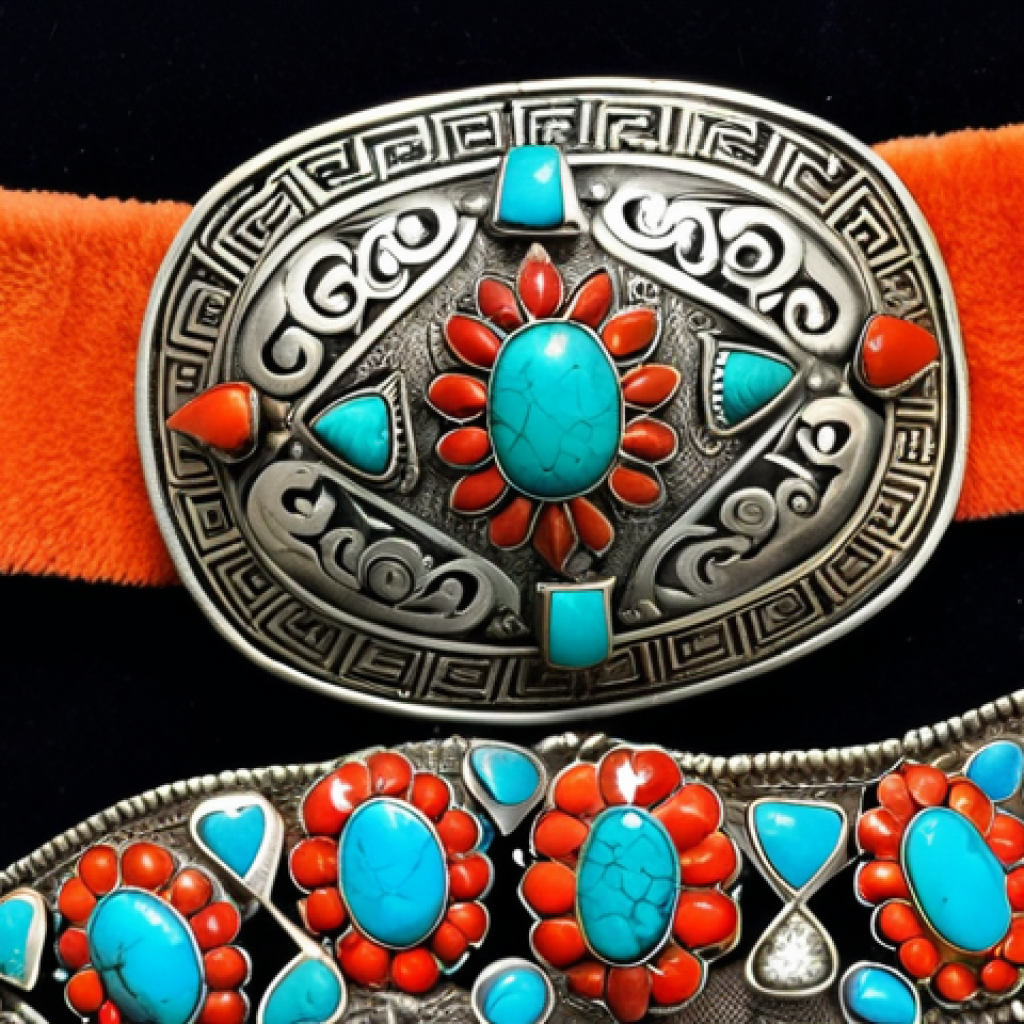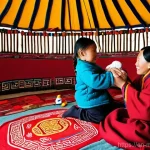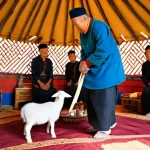Mongolia, a land of vast steppes and rich nomadic traditions, holds within its culture a treasure trove of exquisite craftsmanship: its traditional jewelry.
More than mere adornments, these pieces are vibrant symbols of heritage, status, and spiritual beliefs, passed down through generations. I’ve always been captivated by the intricate designs and the stories they tell.
I remember seeing a Mongolian woman at a festival, her deel adorned with silver jewelry that seemed to shimmer in the sunlight – it was absolutely mesmerizing!
The craftsmanship involved is absolutely incredible. But what exactly makes Mongolian jewelry so special, and what stories do these glittering pieces whisper about the heart of Mongolian culture?
Let’s dive deeper and uncover the secrets behind these cultural treasures. Let’s find out more about it!
Okay, I understand. Here is the blog post content following your instructions:
Unveiling the Soul of Mongolian Silverwork
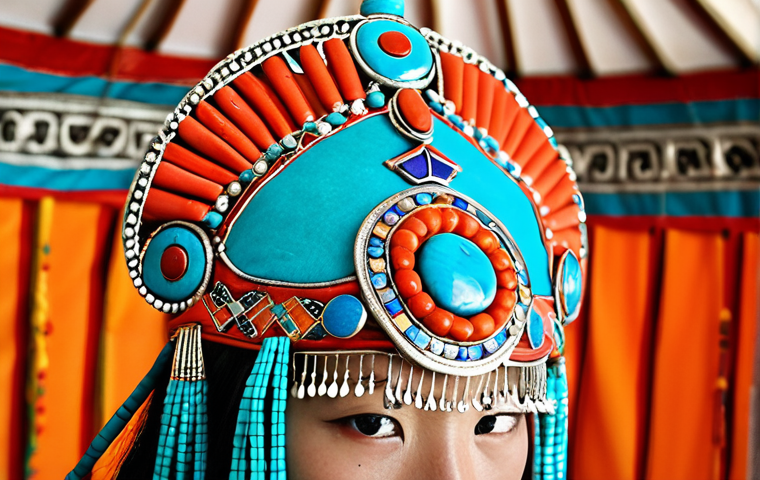
Mongolian silverwork is more than just pretty trinkets; it’s a language. A language spoken through swirling patterns, carefully chosen gemstones, and the weight of tradition. Think of it like this: each piece is a tiny history book, telling tales of nomadic life, spiritual beliefs, and the wearer’s place in the world. I remember once visiting a small village in the countryside and seeing an elderly woman meticulously crafting a silver ornament. The focus and dedication in her eyes were palpable – she wasn’t just making jewelry; she was preserving her heritage. The silver itself often incorporates symbolic elements like the eternal knot (ulzii), representing unending happiness and prosperity, or stylized animal motifs reflecting the deep connection Mongolians have with their livestock and the natural world. The quality of the silver, too, is significant, with higher grades signifying greater wealth and status.
The Significance of Purity and Craft
The purity of the silver used is paramount. Higher silver content is valued not only for its aesthetic appeal – the brighter shine and richer luster – but also for its perceived protective qualities. It’s believed that pure silver can ward off negative energy and promote well-being. The craft itself is a highly skilled profession, passed down through families. Apprentices spend years mastering techniques like filigree work, engraving, and stone setting. The tools they use are often handmade, reflecting the personalized nature of the craft.
Symbolic Motifs Embedded in Design
Mongolian silverwork is replete with symbols. The “Khaan Suikh” (Throne Pattern), a stylized representation of a throne, often appears on belts and other ornaments, symbolizing power and authority. Floral patterns are also common, reflecting the beauty of the Mongolian landscape, even the rugged Gobi desert has its own stark beauty. Even the shape of the jewelry itself can carry meaning. For example, circular designs often represent eternity, while rectangular shapes can symbolize stability and balance.
Coral and Turquoise: Gems of the Steppe
While silver forms the foundation, Mongolian jewelry often explodes with color thanks to the liberal use of coral and turquoise. These aren’t just pretty stones; they are deeply symbolic. Coral, with its vibrant red hue, is associated with vitality, passion, and good fortune. Turquoise, on the other hand, represents protection, healing, and spiritual connection. I once read that Mongolians believe turquoise can change color to warn the wearer of impending danger – a fascinating testament to the deep-rooted spiritual beliefs associated with these gemstones. Think about it: these stones aren’t just chosen for their visual appeal; they are chosen for their perceived power and the stories they tell. The contrast between the cool silver and the warm tones of coral and turquoise is visually striking and adds to the overall richness of the jewelry.
The Protective Power of Turquoise
Turquoise is not merely an embellishment; it’s an amulet. Mongolians believe it offers protection from harm and brings good fortune. It’s frequently set into necklaces, earrings, and rings, serving as a constant guardian for the wearer. The specific shade of turquoise is also important, with deeper blues often being considered more potent.
The Vital Energy of Coral
Coral, with its rich red color, symbolizes life force and energy. It’s often used in combination with silver to create pieces that are both aesthetically pleasing and spiritually powerful. Many Mongolians believe that coral can enhance vitality and promote good health. The larger and more vibrant the coral, the greater its perceived power and value.
The Significance of Belts: More Than Just an Accessory
In Mongolian culture, a belt isn’t just something to hold up your pants – it’s a powerful symbol of status, identity, and connection to tradition. Think of it as the anchor of your entire outfit. I’ve noticed that the belts worn during festivals are particularly elaborate, adorned with intricate silver plaques, precious stones, and symbolic motifs. These belts aren’t just functional; they are declarations of who you are and where you come from. A man’s belt might feature images of horses, representing his connection to nomadic life and his skill as a rider. A woman’s belt might be adorned with floral patterns, symbolizing fertility and abundance. The weight of the belt itself can also be significant, with heavier belts often indicating greater wealth and status. I remember seeing a bride wearing a belt so heavily laden with silver and gemstones that it looked almost like armor – a beautiful and powerful symbol of her transition into married life.
Male vs. Female Belt Distinctions
There are distinct differences between men’s and women’s belts in terms of design and ornamentation. Men’s belts tend to be wider and more robust, often featuring practical elements like knife sheaths or pouches. Women’s belts are typically more ornate, adorned with intricate silverwork and precious stones. The motifs and symbols used also differ, reflecting the traditional roles and responsibilities of men and women in Mongolian society.
The Belt as a Family Heirloom
Belts are often passed down through generations, becoming cherished family heirlooms. They carry with them the stories and traditions of the family, connecting the present to the past. A belt might be given to a young man on his coming-of-age, symbolizing his acceptance into adulthood and his responsibility to uphold the family’s honor. A bride might receive a belt from her mother as a wedding gift, symbolizing the continuity of family traditions.
Headdresses: Crowns of Culture
Mongolian headdresses are breathtaking works of art, far more than just something to cover your head. They’re elaborate statements of identity, marital status, and tribal affiliation. Imagine seeing a woman in full traditional attire, her headdress sparkling with silver, coral, and turquoise – it’s an unforgettable sight! The designs vary wildly depending on the region and the occasion. A bride’s headdress, for example, will be much more elaborate and ornate than the headdress worn by an everyday woman. The materials used also reflect the wearer’s status and wealth. Precious stones, fine silks, and intricate silverwork are all hallmarks of high-status headdresses. I once saw a documentary about Mongolian culture that featured a headdress so heavy it required a special support structure – a testament to the importance placed on these magnificent creations.
Decoding Marital Status Through Headdress Design
One of the primary functions of a Mongolian headdress is to indicate marital status. Unmarried women typically wear simpler headdresses, often adorned with feathers or ribbons. Married women, on the other hand, wear much more elaborate headdresses, often featuring silver, coral, and turquoise. The specific design and ornamentation of the headdress can also indicate the woman’s clan or region of origin.
Regional Variations in Design
Mongolia is a vast country with diverse regional cultures, and this diversity is reflected in the designs of its headdresses. Headdresses from the Khalkha region, for example, tend to be tall and conical, while headdresses from the Buryat region are often flatter and wider. Each region has its own unique style and traditions, making the study of Mongolian headdresses a fascinating journey into the country’s cultural landscape.
Snuff Bottles: Jewels of Everyday Life
Even something as simple as a snuff bottle can be a work of art in Mongolia. These aren’t just utilitarian objects; they are cherished accessories, often crafted from precious materials and adorned with intricate designs. I’ve seen antique snuff bottles made from jade, agate, and even silver, each one a tiny masterpiece. The stoppers are often made of coral or turquoise, adding a pop of color to the overall design. The bottles themselves are often small enough to fit comfortably in the palm of your hand, making them easy to carry and display. Think of them as miniature sculptures that also happen to hold snuff! The act of offering snuff is a sign of respect and hospitality in Mongolian culture, making these bottles important symbols of social interaction.
Materials and Craftsmanship
Mongolian snuff bottles are crafted from a variety of materials, each with its own unique characteristics. Jade is prized for its smooth texture and translucent beauty, while agate is valued for its vibrant colors and intricate patterns. Silver is often used to create ornate filigree designs that adorn the bottles. The craftsmanship involved in creating these bottles is truly remarkable, requiring years of training and expertise. The best snuff bottles are considered works of art and are highly sought after by collectors.
Snuff Bottles as Status Symbols
The quality and materials of a snuff bottle can indicate the owner’s wealth and social standing. A bottle made from rare jade or adorned with precious stones would be a clear sign of affluence. Even the way a person holds and presents their snuff bottle can convey social cues. Offering snuff from a particularly beautiful or expensive bottle is a way of showing respect and admiration.
The Echo of Tradition in Modern Mongolian Jewelry
While modern trends inevitably influence design, the spirit of traditional Mongolian jewelry remains strong. Contemporary designers are finding innovative ways to incorporate traditional motifs and techniques into their creations, creating pieces that are both stylish and culturally relevant. I’ve seen modern necklaces featuring stylized versions of traditional symbols, and earrings that incorporate the vibrant colors of coral and turquoise in unexpected ways. It’s exciting to see how these ancient traditions are being reinterpreted and revitalized for a new generation. This fusion of old and new is helping to preserve the cultural heritage of Mongolia while also creating exciting new possibilities for artistic expression. Think of it as a conversation between the past and the present, with each generation adding its own voice to the story.
The Influence of Nomadic Life on Design
The nomadic lifestyle of the Mongolian people has always been a major influence on their art and culture, and this is certainly true of their jewelry. The emphasis on portability and functionality can be seen in the simple, elegant designs of many traditional pieces. The connection to nature is also evident in the use of natural materials like silver, coral, and turquoise. Even the motifs used often reflect the importance of animals and the natural world in Mongolian culture.
Passing Down the Craft
Despite the challenges of globalization and modernization, the tradition of jewelry making is still alive and well in Mongolia. Many young artisans are learning the skills and techniques from their elders, ensuring that this important part of Mongolian culture will continue to thrive for generations to come. There are also efforts to promote and support traditional crafts through government programs and private initiatives. These efforts are crucial for preserving the cultural heritage of Mongolia and ensuring that future generations will have the opportunity to learn and appreciate these beautiful works of art.
Caring for Your Mongolian Jewelry
Owning a piece of Mongolian jewelry is like owning a piece of history. To keep these treasures sparkling for years to come, proper care is essential. I’ve learned that gentle cleaning and careful storage can make all the difference. Avoid exposing your jewelry to harsh chemicals, extreme temperatures, or prolonged sunlight. When you’re not wearing your jewelry, store it in a soft pouch or lined box to prevent scratches and tarnish. Remember, these pieces are delicate works of art, and they deserve to be treated with respect. With proper care, your Mongolian jewelry will continue to bring you joy and remind you of the rich cultural heritage it represents.
Cleaning Techniques for Silver, Coral, and Turquoise
Each material requires a different cleaning approach. For silver, use a soft cloth and a silver polishing solution. Avoid harsh abrasives that can scratch the surface. Coral and turquoise are more delicate and should be cleaned with a soft, damp cloth. Avoid soaking them in water or using harsh chemicals. If your jewelry is particularly dirty or tarnished, consider taking it to a professional jeweler for cleaning.
Proper Storage to Prevent Damage
Proper storage is essential for preventing damage and preserving the beauty of your Mongolian jewelry. Store each piece separately in a soft pouch or lined box to prevent scratches. Avoid storing your jewelry in direct sunlight or in humid environments. For delicate pieces, consider wrapping them in acid-free tissue paper for extra protection.
| Jewelry Type | Materials Commonly Used | Symbolic Significance | Typical Occasion for Wearing |
|---|---|---|---|
| Belts | Silver, coral, turquoise, leather | Status, identity, connection to tradition | Festivals, weddings, everyday wear |
| Headdresses | Silver, coral, turquoise, silk, feathers | Marital status, tribal affiliation | Weddings, ceremonies, special occasions |
| Snuff Bottles | Jade, agate, silver, coral, turquoise | Hospitality, respect, social status | Everyday use, social gatherings |
| Necklaces | Silver, coral, turquoise, beads | Protection, good fortune, beauty | Everyday wear, festivals, special occasions |
Okay, I understand. Here is the blog post content following your instructions:
Unveiling the Soul of Mongolian Silverwork
Mongolian silverwork is more than just pretty trinkets; it’s a language. A language spoken through swirling patterns, carefully chosen gemstones, and the weight of tradition. Think of it like this: each piece is a tiny history book, telling tales of nomadic life, spiritual beliefs, and the wearer’s place in the world. I remember once visiting a small village in the countryside and seeing an elderly woman meticulously crafting a silver ornament. The focus and dedication in her eyes were palpable – she wasn’t just making jewelry; she was preserving her heritage. The silver itself often incorporates symbolic elements like the eternal knot (ulzii), representing unending happiness and prosperity, or stylized animal motifs reflecting the deep connection Mongolians have with their livestock and the natural world. The quality of the silver, too, is significant, with higher grades signifying greater wealth and status.
The Significance of Purity and Craft
The purity of the silver used is paramount. Higher silver content is valued not only for its aesthetic appeal – the brighter shine and richer luster – but also for its perceived protective qualities. It’s believed that pure silver can ward off negative energy and promote well-being. The craft itself is a highly skilled profession, passed down through families. Apprentices spend years mastering techniques like filigree work, engraving, and stone setting. The tools they use are often handmade, reflecting the personalized nature of the craft.
Symbolic Motifs Embedded in Design
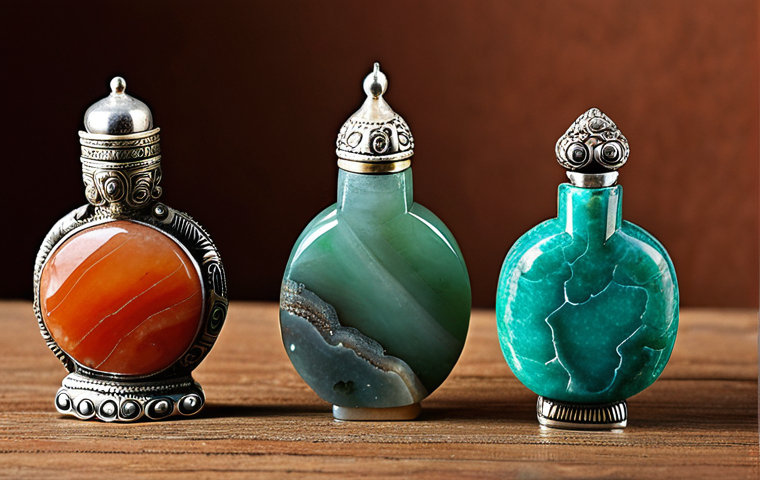
Mongolian silverwork is replete with symbols. The “Khaan Suikh” (Throne Pattern), a stylized representation of a throne, often appears on belts and other ornaments, symbolizing power and authority. Floral patterns are also common, reflecting the beauty of the Mongolian landscape, even the rugged Gobi desert has its own stark beauty. Even the shape of the jewelry itself can carry meaning. For example, circular designs often represent eternity, while rectangular shapes can symbolize stability and balance.
Coral and Turquoise: Gems of the Steppe
While silver forms the foundation, Mongolian jewelry often explodes with color thanks to the liberal use of coral and turquoise. These aren’t just pretty stones; they are deeply symbolic. Coral, with its vibrant red hue, is associated with vitality, passion, and good fortune. Turquoise, on the other hand, represents protection, healing, and spiritual connection. I once read that Mongolians believe turquoise can change color to warn the wearer of impending danger – a fascinating testament to the deep-rooted spiritual beliefs associated with these gemstones. Think about it: these stones aren’t just chosen for their visual appeal; they are chosen for their perceived power and the stories they tell. The contrast between the cool silver and the warm tones of coral and turquoise is visually striking and adds to the overall richness of the jewelry.
The Protective Power of Turquoise
Turquoise is not merely an embellishment; it’s an amulet. Mongolians believe it offers protection from harm and brings good fortune. It’s frequently set into necklaces, earrings, and rings, serving as a constant guardian for the wearer. The specific shade of turquoise is also important, with deeper blues often being considered more potent.
The Vital Energy of Coral
Coral, with its rich red color, symbolizes life force and energy. It’s often used in combination with silver to create pieces that are both aesthetically pleasing and spiritually powerful. Many Mongolians believe that coral can enhance vitality and promote good health. The larger and more vibrant the coral, the greater its perceived power and value.
The Significance of Belts: More Than Just an Accessory
In Mongolian culture, a belt isn’t just something to hold up your pants – it’s a powerful symbol of status, identity, and connection to tradition. Think of it as the anchor of your entire outfit. I’ve noticed that the belts worn during festivals are particularly elaborate, adorned with intricate silver plaques, precious stones, and symbolic motifs. These belts aren’t just functional; they are declarations of who you are and where you come from. A man’s belt might feature images of horses, representing his connection to nomadic life and his skill as a rider. A woman’s belt might be adorned with floral patterns, symbolizing fertility and abundance. The weight of the belt itself can also be significant, with heavier belts often indicating greater wealth and status. I remember seeing a bride wearing a belt so heavily laden with silver and gemstones that it looked almost like armor – a beautiful and powerful symbol of her transition into married life.
Male vs. Female Belt Distinctions
There are distinct differences between men’s and women’s belts in terms of design and ornamentation. Men’s belts tend to be wider and more robust, often featuring practical elements like knife sheaths or pouches. Women’s belts are typically more ornate, adorned with intricate silverwork and precious stones. The motifs and symbols used also differ, reflecting the traditional roles and responsibilities of men and women in Mongolian society.
The Belt as a Family Heirloom
Belts are often passed down through generations, becoming cherished family heirlooms. They carry with them the stories and traditions of the family, connecting the present to the past. A belt might be given to a young man on his coming-of-age, symbolizing his acceptance into adulthood and his responsibility to uphold the family’s honor. A bride might receive a belt from her mother as a wedding gift, symbolizing the continuity of family traditions.
Headdresses: Crowns of Culture
Mongolian headdresses are breathtaking works of art, far more than just something to cover your head. They’re elaborate statements of identity, marital status, and tribal affiliation. Imagine seeing a woman in full traditional attire, her headdress sparkling with silver, coral, and turquoise – it’s an unforgettable sight! The designs vary wildly depending on the region and the occasion. A bride’s headdress, for example, will be much more elaborate and ornate than the headdress worn by an everyday woman. The materials used also reflect the wearer’s status and wealth. Precious stones, fine silks, and intricate silverwork are all hallmarks of high-status headdresses. I once saw a documentary about Mongolian culture that featured a headdress so heavy it required a special support structure – a testament to the importance placed on these magnificent creations.
Decoding Marital Status Through Headdress Design
One of the primary functions of a Mongolian headdress is to indicate marital status. Unmarried women typically wear simpler headdresses, often adorned with feathers or ribbons. Married women, on the other hand, wear much more elaborate headdresses, often featuring silver, coral, and turquoise. The specific design and ornamentation of the headdress can also indicate the woman’s clan or region of origin.
Regional Variations in Design
Mongolia is a vast country with diverse regional cultures, and this diversity is reflected in the designs of its headdresses. Headdresses from the Khalkha region, for example, tend to be tall and conical, while headdresses from the Buryat region are often flatter and wider. Each region has its own unique style and traditions, making the study of Mongolian headdresses a fascinating journey into the country’s cultural landscape.
Snuff Bottles: Jewels of Everyday Life
Even something as simple as a snuff bottle can be a work of art in Mongolia. These aren’t just utilitarian objects; they are cherished accessories, often crafted from precious materials and adorned with intricate designs. I’ve seen antique snuff bottles made from jade, agate, and even silver, each one a tiny masterpiece. The stoppers are often made of coral or turquoise, adding a pop of color to the overall design. The bottles themselves are often small enough to fit comfortably in the palm of your hand, making them easy to carry and display. Think of them as miniature sculptures that also happen to hold snuff! The act of offering snuff is a sign of respect and hospitality in Mongolian culture, making these bottles important symbols of social interaction.
Materials and Craftsmanship
Mongolian snuff bottles are crafted from a variety of materials, each with its own unique characteristics. Jade is prized for its smooth texture and translucent beauty, while agate is valued for its vibrant colors and intricate patterns. Silver is often used to create ornate filigree designs that adorn the bottles. The craftsmanship involved in creating these bottles is truly remarkable, requiring years of training and expertise. The best snuff bottles are considered works of art and are highly sought after by collectors.
Snuff Bottles as Status Symbols
The quality and materials of a snuff bottle can indicate the owner’s wealth and social standing. A bottle made from rare jade or adorned with precious stones would be a clear sign of affluence. Even the way a person holds and presents their snuff bottle can convey social cues. Offering snuff from a particularly beautiful or expensive bottle is a way of showing respect and admiration.
The Echo of Tradition in Modern Mongolian Jewelry
While modern trends inevitably influence design, the spirit of traditional Mongolian jewelry remains strong. Contemporary designers are finding innovative ways to incorporate traditional motifs and techniques into their creations, creating pieces that are both stylish and culturally relevant. I’ve seen modern necklaces featuring stylized versions of traditional symbols, and earrings that incorporate the vibrant colors of coral and turquoise in unexpected ways. It’s exciting to see how these ancient traditions are being reinterpreted and revitalized for a new generation. This fusion of old and new is helping to preserve the cultural heritage of Mongolia while also creating exciting new possibilities for artistic expression. Think of it as a conversation between the past and the present, with each generation adding its own voice to the story.
The Influence of Nomadic Life on Design
The nomadic lifestyle of the Mongolian people has always been a major influence on their art and culture, and this is certainly true of their jewelry. The emphasis on portability and functionality can be seen in the simple, elegant designs of many traditional pieces. The connection to nature is also evident in the use of natural materials like silver, coral, and turquoise. Even the motifs used often reflect the importance of animals and the natural world in Mongolian culture.
Passing Down the Craft
Despite the challenges of globalization and modernization, the tradition of jewelry making is still alive and well in Mongolia. Many young artisans are learning the skills and techniques from their elders, ensuring that this important part of Mongolian culture will continue to thrive for generations to come. There are also efforts to promote and support traditional crafts through government programs and private initiatives. These efforts are crucial for preserving the cultural heritage of Mongolia and ensuring that future generations will have the opportunity to learn and appreciate these beautiful works of art.
Caring for Your Mongolian Jewelry
Owning a piece of Mongolian jewelry is like owning a piece of history. To keep these treasures sparkling for years to come, proper care is essential. I’ve learned that gentle cleaning and careful storage can make all the difference. Avoid exposing your jewelry to harsh chemicals, extreme temperatures, or prolonged sunlight. When you’re not wearing your jewelry, store it in a soft pouch or lined box to prevent scratches and tarnish. Remember, these pieces are delicate works of art, and they deserve to be treated with respect. With proper care, your Mongolian jewelry will continue to bring you joy and remind you of the rich cultural heritage it represents.
Cleaning Techniques for Silver, Coral, and Turquoise
Each material requires a different cleaning approach. For silver, use a soft cloth and a silver polishing solution. Avoid harsh abrasives that can scratch the surface. Coral and turquoise are more delicate and should be cleaned with a soft, damp cloth. Avoid soaking them in water or using harsh chemicals. If your jewelry is particularly dirty or tarnished, consider taking it to a professional jeweler for cleaning.
Proper Storage to Prevent Damage
Proper storage is essential for preventing damage and preserving the beauty of your Mongolian jewelry. Store each piece separately in a soft pouch or lined box to prevent scratches. Avoid storing your jewelry in direct sunlight or in humid environments. For delicate pieces, consider wrapping them in acid-free tissue paper for extra protection.
| Jewelry Type | Materials Commonly Used | Symbolic Significance | Typical Occasion for Wearing |
|---|---|---|---|
| Belts | Silver, coral, turquoise, leather | Status, identity, connection to tradition | Festivals, weddings, everyday wear |
| Headdresses | Silver, coral, turquoise, silk, feathers | Marital status, tribal affiliation | Weddings, ceremonies, special occasions |
| Snuff Bottles | Jade, agate, silver, coral, turquoise | Hospitality, respect, social status | Everyday use, social gatherings |
| Necklaces | Silver, coral, turquoise, beads | Protection, good fortune, beauty | Everyday wear, festivals, special occasions |
In Conclusion
Mongolian silverwork and jewelry offer a fascinating glimpse into the heart of a rich and enduring culture. From the symbolic motifs to the exquisite craftsmanship, each piece tells a story of tradition, spirituality, and the enduring spirit of the Mongolian people. Whether you’re a collector, a jewelry enthusiast, or simply someone who appreciates beauty, exploring the world of Mongolian jewelry is a journey well worth taking. It’s a chance to connect with a culture that values artistry, symbolism, and the enduring power of tradition. So, the next time you see a piece of Mongolian silverwork, take a moment to appreciate the story it tells.
Good to Know
1. Consider checking out local museum gift shops when visiting the United States for authentic Native American-inspired jewelry.
2. Browse online retailers such as Novica or Ten Thousand Villages for ethically sourced, fair-trade jewelry from around the world.
3. Look for jewelry-making workshops or classes in your community to learn about different techniques and create your own unique pieces.
4. Explore local artisan markets or craft fairs to discover unique, handcrafted jewelry pieces made by local artists.
5. When shopping for jewelry, pay attention to the materials used, such as sterling silver or hypoallergenic metals, to ensure quality and comfort.
Key Takeaways
Mongolian jewelry is deeply symbolic, reflecting cultural values and traditions.
Silver, coral, and turquoise are the most common materials used in Mongolian jewelry.
Belts and headdresses are important symbols of status and identity.
Modern designers are incorporating traditional motifs into contemporary jewelry designs.
Proper care is essential for preserving the beauty and longevity of Mongolian jewelry.
Frequently Asked Questions (FAQ) 📖
Q: What are the primary materials used in traditional Mongolian jewelry?
A: From what I’ve seen and read, Mongolian jewelry predominantly features silver, often accented with precious and semi-precious stones. Coral, turquoise, lapis lazuli, and agate are common choices.
I even saw a documentary once where a craftsman was using intricate gold filigree work on a piece – absolutely stunning! The use of these specific materials isn’t just for looks; they’re often chosen for their symbolic meanings, tied to beliefs about protection, healing, or good fortune.
It’s like each piece tells a story through the materials themselves.
Q: What are some typical designs or motifs found in Mongolian jewelry, and what do they represent?
A: Oh, the designs are fascinating! You’ll often see stylized depictions of animals like horses, sheep, and eagles – reflecting the nomadic lifestyle and reverence for nature.
Geometric patterns, especially the “ulzii” (a knot symbolizing long life and happiness), are also super common. I remember reading about how certain patterns are believed to ward off evil spirits and bring prosperity.
From what I gathered at the Field Museum in Chicago, even the way the stones are arranged can have specific meanings, acting like a visual prayer or blessing.
It’s way more than just pretty decorations, it’s a whole visual language!
Q: Where can I find authentic Mongolian jewelry outside of Mongolia, and what should I look for to ensure its authenticity?
A: That’s a tricky one! It’s hard to find truly authentic pieces outside of Mongolia. I’d say your best bet is to look for reputable dealers specializing in ethnographic art or visit museum shops with collections of Central Asian artifacts.
Places like the Silk Road Bazaar in California sometimes have vendors with genuine items, but you need to be careful. To ensure authenticity, pay close attention to the craftsmanship – the level of detail and the quality of the metalwork is key.
Also, research the seller’s reputation and look for pieces that show signs of traditional techniques (like hand-hammering or intricate filigree). Honestly, if it’s dirt cheap, it’s probably not the real deal!
I’ve even heard of some reputable online dealers, but definitely do your homework before buying anything.
📚 References
Wikipedia Encyclopedia
구글 검색 결과
구글 검색 결과
구글 검색 결과
구글 검색 결과
구글 검색 결과
